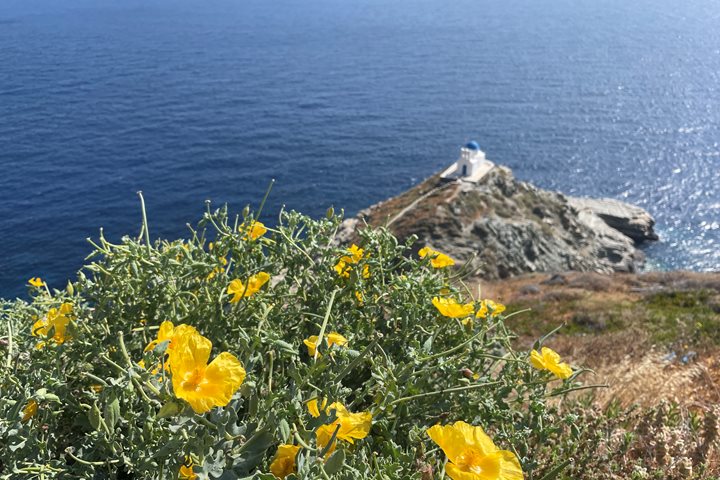The late summer winds and rough seas of the Aegean gave us the opportunity for a change in itinerary today, and we paid a visit to an island of the Dodecanese, not far from the Turkish coast.
We began our visit to Patmos at the heavily fortified Monastery of St. John, founded in 1088 by Christodoulos with the support of the Byzantine emperor Alexius I Comnenus. St. John the Theologian, while exiled to this island in the first century, received a vision of the apocalypse, which is recorded in the Biblical book of Revelation. The dimly lit chapel of the monastery housed blessed relics and spectacular Byzantine-era paintings, some of which date to the 12th century. The monastery’s museum features numerous icons, silver liturgical vessels, and sumptuous priestly vestments, alongside the institution’s original 1088 charter.
We then visited the Cave of the Apocalypse, said to be the location where John received his vision. After our visit, some of us hiked down to the harbor town, Skala, while others returned by coach. In stark contrast to the hushed sanctity of the cave, the town was a hive of activity, with dockside cafés and restaurants, pleasant alleyways full of shops, and a mingling of locals, pilgrims, and tourists.
After lunch aboard our beautiful ship, we enjoyed a pleasant afternoon under sail. We heard a presentation on seafaring in the ancient Aegean that covered the long and colorful history of seafaring and shipbuilding in this region. In the evening, we had a fantastic prime rib dinner on the Lido Deck, followed by a special performance by Sea Cloud shanty singers, which included sea shanties and songs in three languages, representing just a few of the many nationalities of the ship’s diverse crew.









